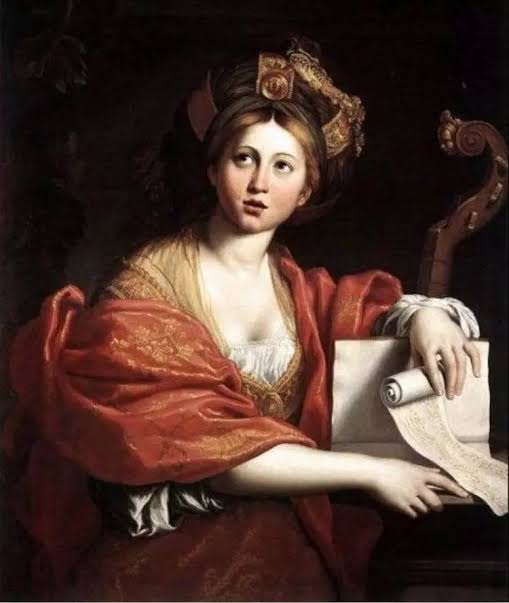

Barbara Strozzi
Born: 1619Died: 1677
Education: Accademia degli Incogniti, one of the largest and most prestigious intellectual academies in Europe and a major political and social force in the Republic of Venice
Career: Barbara was described as "la virtuosissima cantatrice di Giulio Strozzi" (Giulio Strozzi's extremely virtuosic singer)
Venetian composer Barbara Strozzi was one of the most important composers of Italian cantatas and baroque arias. Her work was published prolifically during her lifetime and was essential to the historical development of vocal music and opera beyond the baroque era. Her sensitivity to text and experimentation with form and style offered nuance and a high level of emotional sensitivity to her music. Strozzi was the daughter of Giulio Strozzi, a famous poet, and Isabella Garzoni, Giulio’s maid. Her birth was illegitimate and her parents never married but her father remained a consistently influential and supportive part of her life and career as a singer and composer. He ensured that she was trained in composition and he provided the texts for her first volume of work. Francesco Cavalli became Strozzi’s teacher, and some of her work was eventually published with his. Because of her father’s successful literary career, Strozzi likely had more opportunities than other women, especially composers, to become connected to the cultural elite in Venice. Strozzi often sang informally in her father’s home where she was heard by prominent musicians. Nicolò Fontei wrote two volumes of songs for her after hearing her sing these concerts. Strozzi’s success as a composer hinged on her involvement with the prominent writers and musicians of her day with whom many women were not allowed to associate. These experiences undoubtedly influenced her ability to compose high level music that would be published during her lifetime. Text became the driving force of many of Strozzi’s compositions, most likely due to her father’s literary influence. She composed eight volumes of music and all but one of these was secular. Most of her compositions were cantatas and all but four were written for soprano. Her arias and cantatas differed from one another in both length and structure. The arias were typically shorter and strophic with a refrain at the beginning and end while her cantatas were longer and more diverse, usually with many sections that combined several vocal styles. She often used recitativo parlando in her work, which emphasized the text using minimal accompaniment, and she paired this recitative with arioso passages. (Ariosos are a mid-point between recitative and arias. They are more lyrical than recitatives but less formal and structured than the arias we know today.) Strozzi often set very emotional texts and wrote frequently about love, mainly misery in love and unrequited love. Most of the texts she used were Marinistic love poetry and her sensitivity to text was one of her biggest compositional strengths. She employed unprepared dissonance to express the extreme emotions she conveyed in her music and wrote dissonances between the voice and accompaniment in order to convey the depth of emotion and color the text dramatically. Her compositions were typically more modal than tonic-dominant. She played with form and would shift between recitatives, arias, and ariosos regardless of how the text was written and divided. These dynamic contrasts served to increase the drama and create an atmosphere of unpredictability. Strozzi is one of the few well-known female Italian composers of the 17th century still studied today. The fact that she earned public recognition during her lifetime and that her music still exists and is performed today are rare circumstances, especially for a secular woman composer of Strozzi’s time. She was one of the most prolific contributors to secular chamber music of the seicento along with Carissimi, Rossi and Cesti, and her work is considered of a very similar caliber to the best works of her male contemporaries. Even though these men wrote more works than she did, many more of Strozzi’s compositions were published. She most likely participated in the publication of her own music, ensuring that it would exist beyond her lifetime. Most of her output was in the form of cantatas while her male peers wrote both cantatas and music for theater and church. Primarily what we know of Strozzi is related to her compositions, but she was also a very talented singer and likely sang and accompanied herself in performance. Even though Strozzi associated with some of the major opera composers of her day and was a prominent figure of 17th century Venetian musical life, when opera was a major genre, she neither performed in nor composed an opera. Little is known of Strozzi’s life after her last composition in 1664. Her prolific contributions to the cantata repertoire and to overall 17th century vocal music established Strozzi as one of the leading female composers of her time; her works remain well known and are regularly performed. Her ability to work sensitively with text and compose music characterized by emotional immediacy and innovative use of form has given her music lasting relatability and appreciation.

